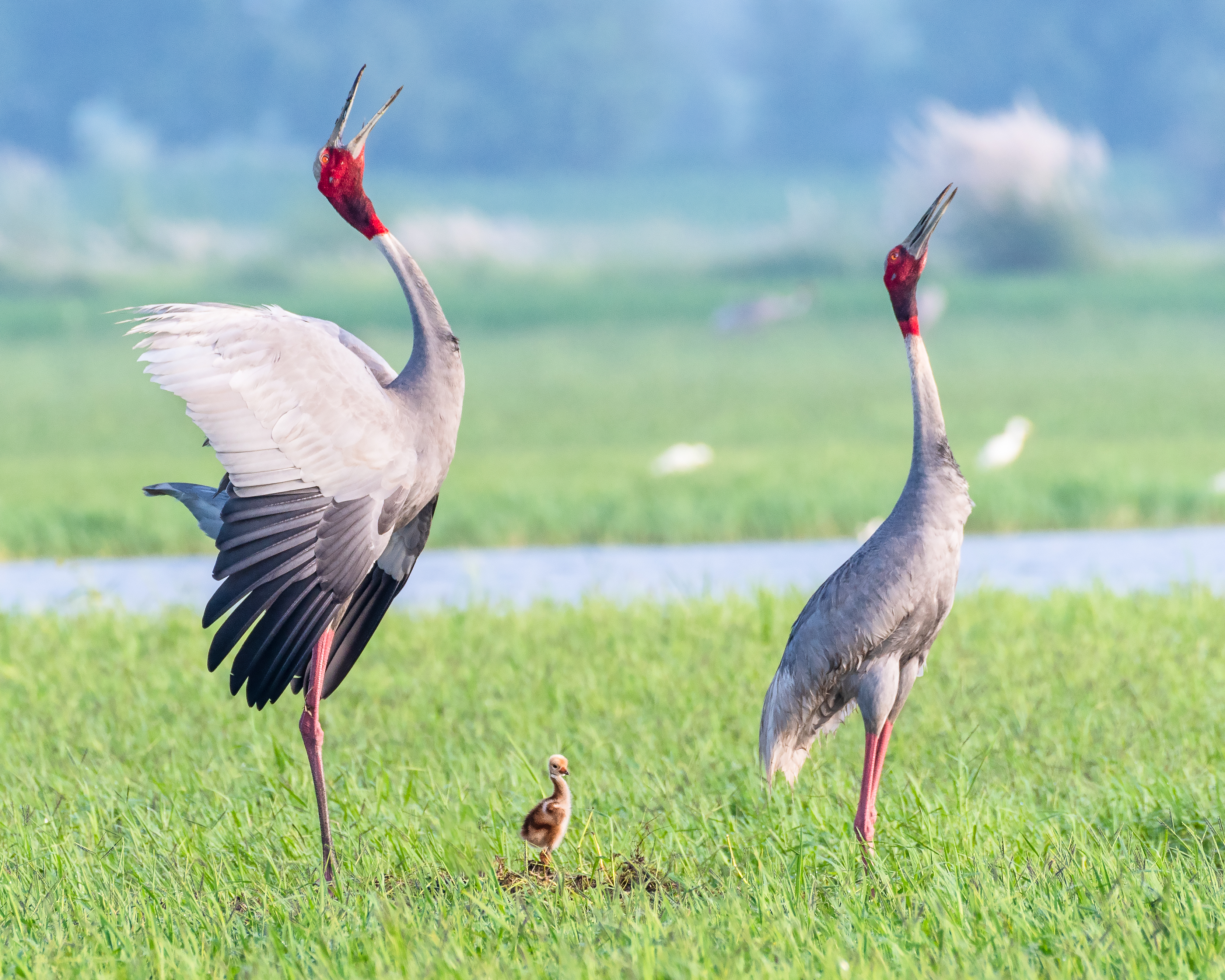When it comes to tall birds, your mind probably jumps to the ostrich – or maybe the magnificent chonk that is Pesto the king penguin – but many of the planet’s largest birds are flightless. So, what is the tallest bird that can actually take to the skies? This title belongs to a species of crane with a striking red head and a loud trumpeting call.
There are 15 species in the crane family Gruidae – not only do these birds have the ability to travel astonishing distances during migration, but they’re also impressively lanky. The Sarus crane (Grus antigone) has been crowned the tallest flying bird, measuring up to 1.8 meters (5.9 feet) in height with a wingspan of around 2.5 meters (8.2 feet).
Located in the Indian subcontinent, Southeast Asia, and northern Australia, these non-migratory birds nest in low wetlands and flooded rice paddies. Feeding on a mixture of insects, fish, plants, and seeds, Sarus cranes can weigh anywhere from 5 to 12 kilograms (11-26.43 pounds) with the males of the species typically being larger than the females.
Despite their cumbersome size, Sarus cranes can build up some impressive speed on the ground – cranes can reportedly fly up to 72 kilometers per hour (45 miles per hour).
Many crane species exhibit pretty fancy courtship behaviors, and Sarus cranes are no exception. To attract the attention of mates (and potentially to establish territories), Sarus cranes have been known to put on elaborate dance and trumpeting sound displays. The voice boxes of these enormous birds are so powerful, in fact, that their calls can be heard several miles away.
To go along with their enormous bodies and booming mating calls, their nests are also sufficiently gargantuan. These nests can measure 1.83 meters (6 feet) in diameter and are used to incubate 1 or 2 eggs a year, with both the males and females of the species incubating and raising their young together.

Sarus crane parents will raise their tiny hatchlings together.
Image credit: Mukund Kumar / Shutterstock.com
Despite not having many ground predators, the Sarus crane is currently classified as Vulnerable on the International Union for Conservation of Nature (IUCN) Red List. The species is threatened by habitat loss due to agriculture and land development, poisoning from pesticides, and hunting and egg collection.
K. S. Gopi Sundar of the Nature Conservation Foundation and the global co-chair of the IUCN Stork, Ibis and Spoonbill Specialist Group explained to Mongabay that the family of deceased Sarus cranes will often return to inspect the corpse, leading to additional electrocution risks from wires alongside roads. However, Sundar has also observed Sarus cranes teaching their chicks to avoid these deadly electrical wires.
“They give a specific call when approaching wires in flight. This lets the younger birds know that they should either move upwards or downwards to avoid the wires,” Sundar said.
There are currently several conservation efforts underway to protect the species, especially in their breeding areas, with teams working to protect wetlands and restore their population number through captive breeding projects.
Honorable mentions
While the Sarus crane gets the title of tallest flying bird, and at 2.8 meters (9.2 feet) tall, ostriches get the title of largest living bird, here are some more absolute units that dominate their categories.
The heaviest flying bird, at between 11 and 19 kilograms (24-42 pounds), is the kori bustard (Ardeotis kori), native to southern and eastern Africa.
The wandering albatross, with an average wingspan of 2.5-3.5 meters (8.2-11.5 feet), has the largest wingspan of any bird. Despite their impressive size, these beasts are also able to cover vast distances, migrating up to 120,000 kilometers (74,565 miles) in a year.
And finally, the smallest bird in the world, at just 5.5 centimeters (2.2 inches) long, is the bee hummingbird (Mellisuga helenae). Weighing just up to 1.95 grams (0.07 ounces), these tiny borbs flap their wings 80 times per second, creating the “humming” sound that gives them their adorable name.
Source Link: What Is The World’s Tallest Flying Bird?